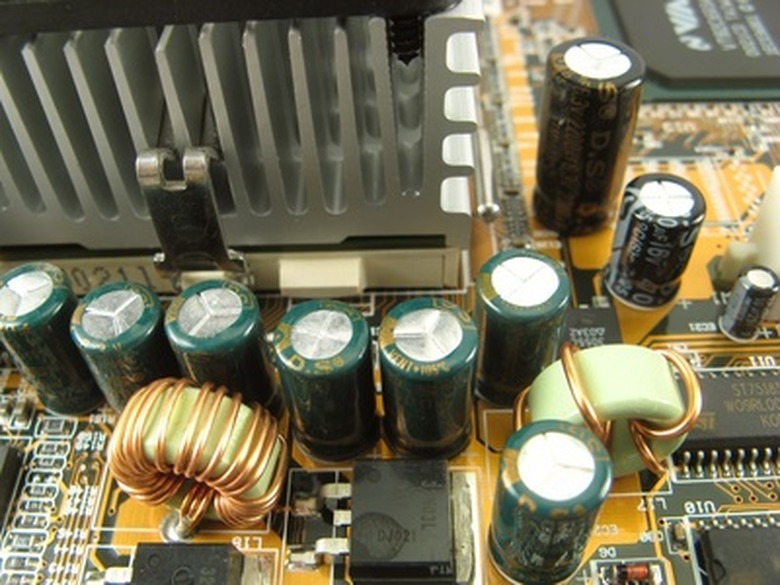What Is A Toroid Coil?
A solenoid is an electromagnet formed from a wire that carries current. Electromagnets have magnetic fields created from currents. The wire of a solenoid is often formed into a helical coil, and a piece of metal such as iron is often inserted inside. When a solenoid is bent into the shape of a circle or doughnut, it is called a toroid.
Features
Features
A toroid has a magnetic field inside of itself that forms a series of concentric circles. Outside of it, the field is zero. The strength of this magnetic field depends on the number of coils the toroid has on its body. The field is not uniform, because the field is stronger near the inner part of the ring than it is nearer the outer part. This means that if r is the radius of the transformer, the magnetic field decreases as r becomes larger.
Physics
Physics
Toroids are valuable because, like all solenoids, they are inductors. Inductors can induce or cause currents to be created in nearby coils. They were invented in August 1831 by English physicist Michael Faraday. It was Faraday who discovered that a changing magnetic field can induce a voltage in a nearby wire, and this is called Faraday's Law of Induction. Toroids also have what is known as self-inductance, which is a type of resistance. The toroid resists or fights changes to its own current, whether it is to make it larger or smaller. The strength of the self-inductance depends on the toroid's number of coils and AC source.
Toroidal Transformers
Toroidal Transformers
Transformers are made from a pair of solenoids wrapped around a metal core that is usually a ferrite. Toroidal transformers are two coils wrapped around a metal, such as a ferrite or silicon steel, that is doughnut shaped. The coils are either wrapped in different areas or placed one over the other. They are preferred for RF or radio frequency transformers, where they are used to increase or decrease voltages from power sources, and to isolate different parts in a circuit. RF transformers are also used for impedance matching, which means they help connect input and output parts of different circuits.
Disadvantages and Advantages
Disadvantages and Advantages
Toroids have some disadvantages over regular solenoids. They are harder to wind and also to tune. However, they are more efficient at producing needed inductances. For the same inductance as a regular solenoid, a toroid requires fewer turns, and can be made smaller in size. Another advantage is that since the magnetic field is confined to the inside, toroids and toroidal transformers can be placed near other electronic components without concern about unwanted inductive interactions.
Uses
Uses
Toroids are used in telecommunications, medical devices, musical instruments, amplifiers, ballasts and more. A tokamak is a nuclear fusion device that uses a magnetic field to confine plasma. A plasma is a gas that contains free electrons and ions, and only appears at high temperatures. The confinement of the plasma in a tokamak is done with the use of a toroid.
References
- "Essential University Physics"; Richard Wolfson; 2007
- "Physics for Scientists and Engineers"; Paul Allen Tipler and Gene Mosca; 2003
- "Teach Yourself Electricity and Electronics"; Stan Gibilisco; 2006
- Amgis: Toroidal Transformer Basics
Cite This Article
MLA
Lewis, Kim. "What Is A Toroid Coil?" sciencing.com, https://www.sciencing.com/toroid-coil-6637698/. 24 April 2017.
APA
Lewis, Kim. (2017, April 24). What Is A Toroid Coil?. sciencing.com. Retrieved from https://www.sciencing.com/toroid-coil-6637698/
Chicago
Lewis, Kim. What Is A Toroid Coil? last modified March 24, 2022. https://www.sciencing.com/toroid-coil-6637698/
